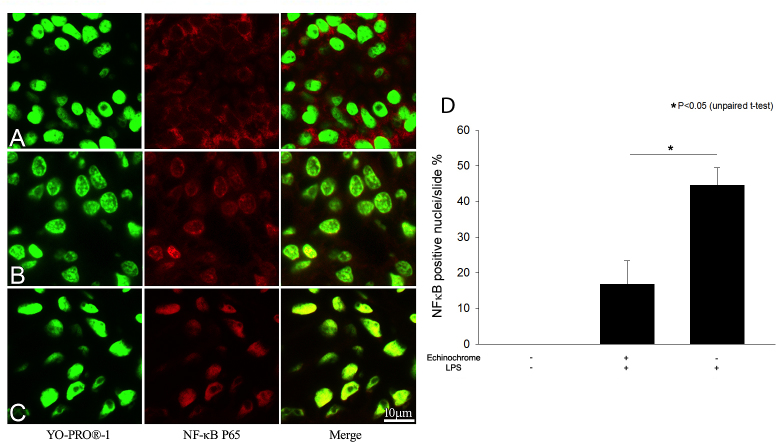Figure 4.
Effect of echinochrome on nuclear factor κB (NFκB) p65 (red) activation in the iris/ciliary body 3 h after lipopolysaccharide injection is shown. Dual-immunofluorescence labeling showed NFκB colocalization (yellow) in nuclei (green). A: Control naïve animals were not injected with lipopolysaccharide (LPS); an inactive NFκB signal was observed only in the cytoplasm area of cells and no nuclear colocalization of NFκB was detected. B: The group of endotoxin-induced uveitis (EIU) rats treated with echinochrome showed reduced NFκB colocalization compared to C: untreated EIU rats. D: Quantitative analysis of NFκB-positive cells in the iris/ciliary body (ICB). Data are shown as mean±standard error of mean (SEM; n=4). *Amount of NFκB nuclear colocalization was significantly lower in echinochrome treated group than untreated EIU controls (p<0.05).

